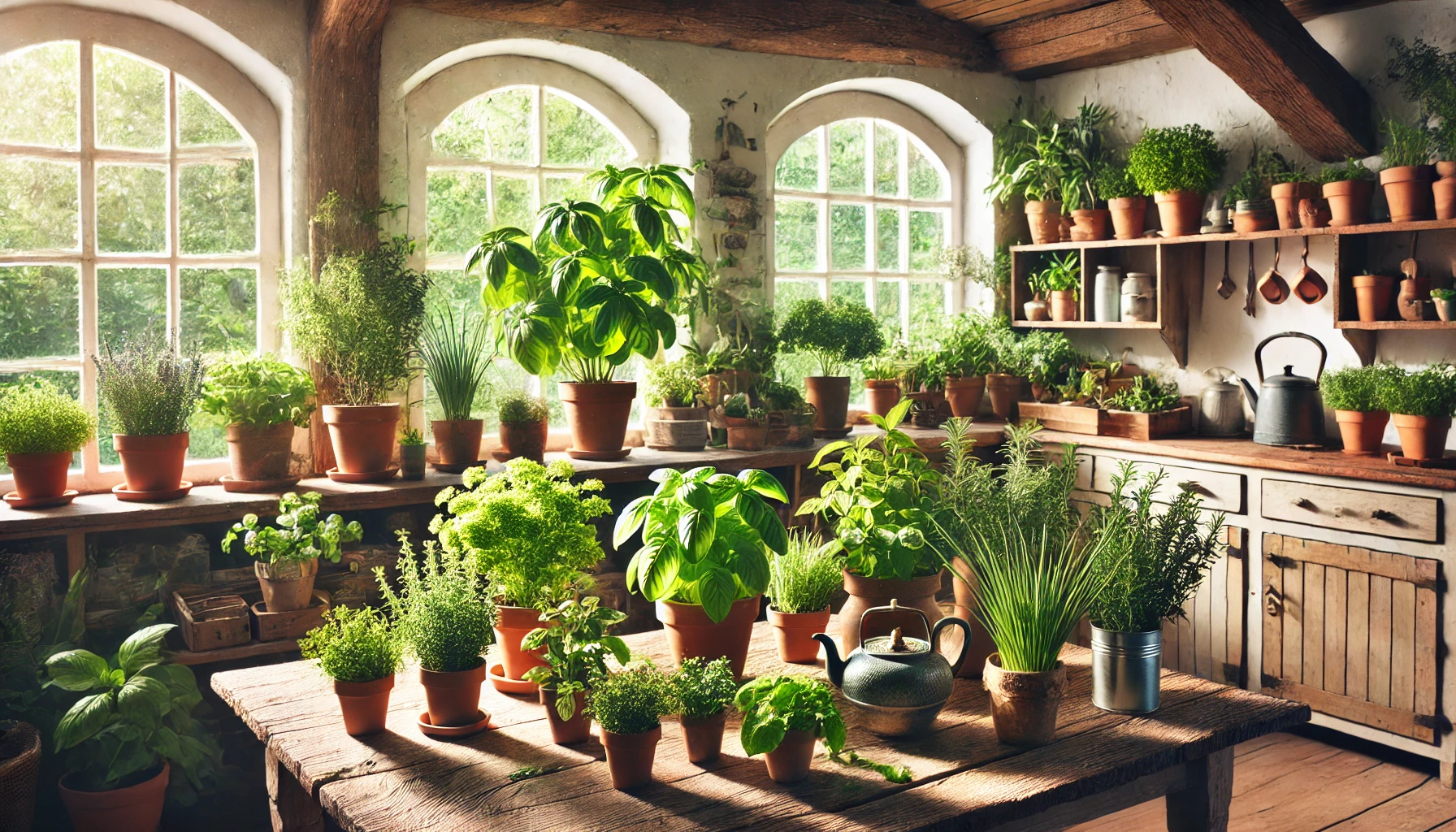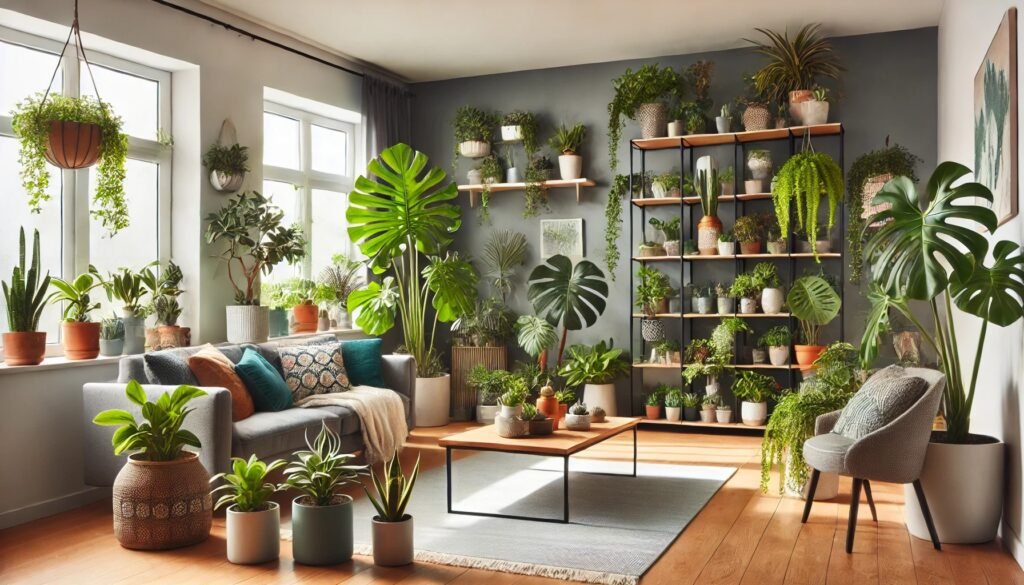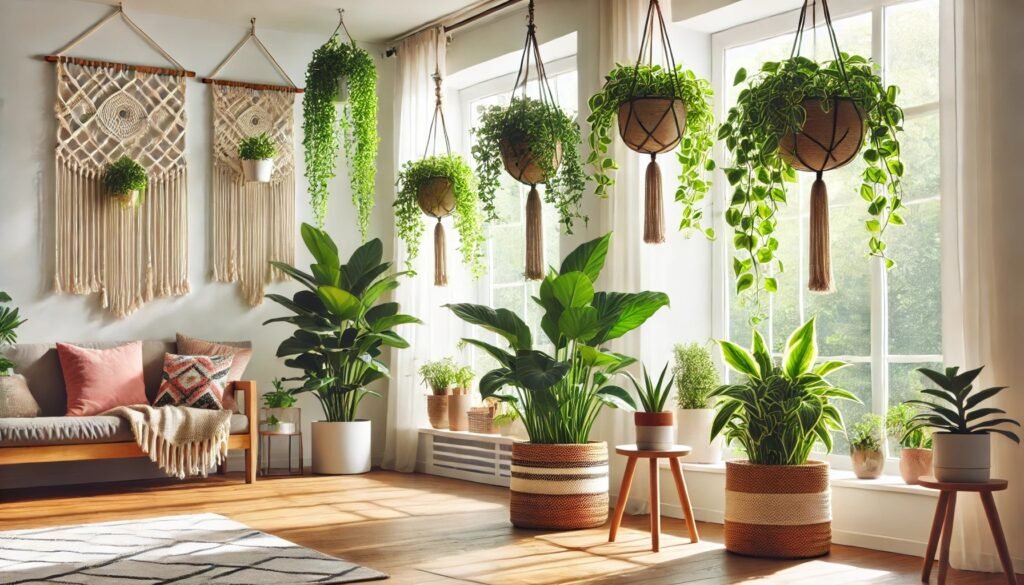
Starting and maintaining an herb garden is a rewarding venture that brings fresh flavors to your kitchen and a touch of green to your home. Whether you choose to grow your herbs indoors or outdoors, this guide will walk you through the essentials of herb gardening, from selecting and planting herbs to caring for and harvesting them.
Choosing Your Herbs
When starting an herb garden, it’s important to choose herbs that are easy to grow and suited to your climate. Here are eight popular herbs that are perfect for beginners:
- Basil (Annual): Basil thrives in warm weather and needs full sun. It’s great for indoor and outdoor gardens.
- Parsley (Biennial): Parsley can be grown indoors or outdoors and prefers full sun to partial shade.
- Thyme (Perennial): Thyme is a hardy herb that can grow in various conditions, making it perfect for any garden.
- Mint (Perennial): Mint is best grown in containers due to its invasive nature. It prefers partial shade.
- Rosemary (Perennial): Rosemary thrives in well-draining soil and full sun, suitable for both indoor and outdoor gardens.
- Cilantro (Annual): Cilantro prefers cooler weather and partial shade, making it ideal for spring and fall gardens.
- Chives (Perennial): Chives are easy to grow in both indoor and outdoor gardens, preferring full sun.
- Oregano (Perennial): Oregano thrives in full sun and well-draining soil, suitable for indoor and outdoor gardens.
Planting Methods
Seeds vs. Seedlings
Starting from seeds can be cost-effective and rewarding, but it requires patience and attention. Seeds allow you to grow a variety of herbs and start them indoors before transplanting them outdoors. However, seedlings offer a head start, especially for beginners, and ensure faster growth and quicker harvests.
Planting Techniques
For seeds, follow the packet instructions for depth and spacing. Start seeds indoors 6-8 weeks before the last frost date for your area. For seedlings, plant them in well-prepared soil, ensuring they have enough space to grow.
Container Gardening vs. In-Ground Planting
Container gardening is ideal for small spaces and provides better control over soil quality and moisture levels. Use containers with drainage holes and high-quality potting mix. In-ground planting is suitable for larger spaces and can accommodate more herbs. Ensure the soil is well-draining and amend it with compost.
Care and Maintenance
Watering Needs
Herbs generally prefer well-draining soil and moderate watering. Water deeply but infrequently, allowing the soil to dry out between waterings. Adjust watering frequency based on weather conditions and soil type.
Light Requirements
Most herbs need full sun (6-8 hours of direct sunlight per day). Indoor herbs should be placed near a south-facing window or under grow lights if natural light is insufficient.
Soil Preferences
Herbs thrive in well-draining soil rich in organic matter. Use a good quality potting mix for containers and amend garden soil with compost to improve fertility and drainage.
Pruning and Harvesting Techniques
Regular pruning encourages bushier growth and prevents herbs from becoming leggy. Pinch back the tips of herbs like basil and mint to promote branching. Harvest herbs in the morning when their essential oils are most concentrated. Use clean, sharp scissors to cut herbs, taking care not to remove more than one-third of the plant at a time.
Fertilizing
Use a balanced, organic fertilizer every 4-6 weeks during the growing season. Compost tea or fish emulsion are excellent choices for herbs, providing essential nutrients without the risk of over-fertilization.
Pest Control
Natural Solutions for Common Pests
Herbs can be susceptible to pests like aphids, spider mites, and whiteflies. Use natural pest control methods such as introducing beneficial insects like ladybugs and lacewings, or applying insecticidal soap and neem oil. Regularly inspect your plants and remove any affected leaves.
Companion Planting
Certain herbs benefit from being planted together. For example, basil and tomatoes are great companions, as basil helps deter pests that affect tomatoes. Mint and cabbage also make a good pair, as mint repels cabbage moths. Companion planting enhances growth and helps manage pests naturally.
Preservation Techniques
Drying and Freezing
Drying herbs is an excellent way to preserve their flavors. Hang small bunches of herbs upside down in a dry, well-ventilated area. Once dried, store them in airtight containers. Freezing herbs in ice cube trays with water or olive oil preserves their freshness and is convenient for cooking.
Identifying and Treating Common Problems
Yellowing Leaves, Mildew, and Stunted Growth
Yellowing leaves can indicate overwatering or nutrient deficiencies. Adjust watering habits and consider using a balanced fertilizer. Mildew can be prevented by ensuring good air circulation and avoiding overhead watering. Stunted growth may be due to poor soil quality or insufficient light. Ensure your herbs are getting the proper nutrients and light they need.
Sustainability Practices
Organic Gardening Techniques
Using organic gardening techniques such as composting, natural pest control, and organic fertilizers helps maintain a healthy and sustainable garden. Avoid synthetic chemicals that can harm beneficial insects and the environment.
Water Conservation Tips
Water conservation is crucial for sustainable gardening. Use mulch to retain soil moisture, and install a rain barrel to collect rainwater for irrigation. Water your garden in the early morning to reduce evaporation.
Creative Uses for Fresh Herbs
Culinary Uses
Fresh herbs can elevate any dish. Use basil in pesto, rosemary in roasted meats, and mint in refreshing drinks. Herbs can be used in salads, sauces, and marinades to add fresh, vibrant flavors.
Medicinal Properties
Many herbs have medicinal properties. For example, mint can soothe digestive issues, and chamomile can help with relaxation and sleep. Research the medicinal benefits of your herbs and use them to support your health naturally.
Aromatic and Aesthetic Benefits
Herbs are not only useful but also add beauty and fragrance to your garden. Lavender, rosemary, and thyme release pleasant aromas, making your garden a delightful sensory experience.
Final Thoughts
Starting and maintaining an herb garden is a fulfilling journey that brings numerous benefits, from fresh culinary ingredients to a beautiful and fragrant garden space. Whether you choose to grow your herbs indoors or outdoors, following these guidelines will help you create a thriving herb garden. Embrace sustainable practices, enjoy the process, and reap the rewards of your efforts. Happy gardening!
Stay connected with the world of plants! Subscribe to Phylofy for expert gardening tips, DIY projects, and eco-friendly inspiration. Join our community and nurture your love for nature. Don’t miss exclusive content and updates. Subscribe now!



